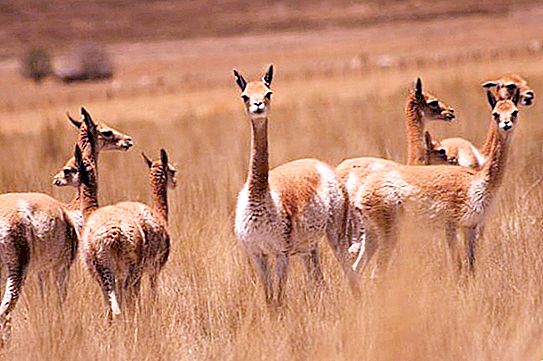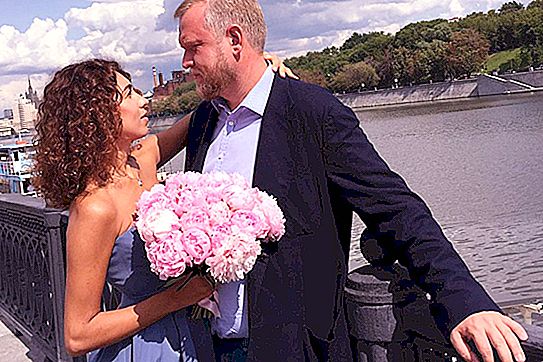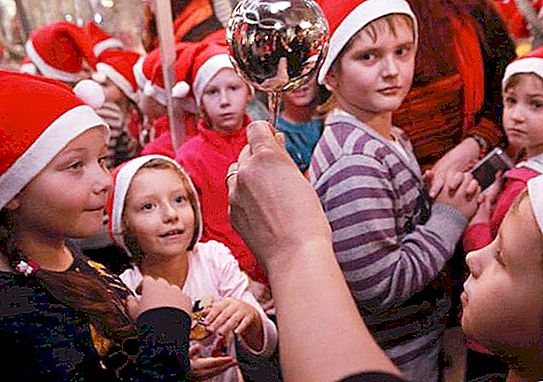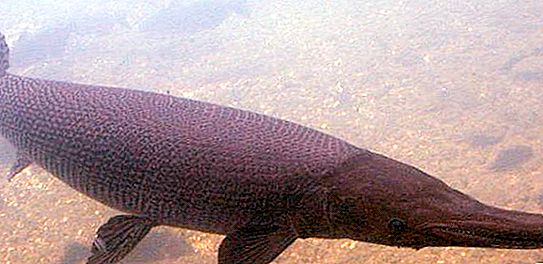The ancient peoples, once inhabiting the foothills of the Andes, considered the animal, outwardly resembling a small camel, sacred. They called his coat the “Golden Fleece, ” and hunting him was considered the greatest sin. We are talking about a small ruminant animal - the vicuna, which belongs to the genus of llamas and the family of camels. The vicuna is much more alike in appearance alpaca or guanaco. The similarity with the camel in these creatures is very distant, if only because they are much smaller in size and have no humps.
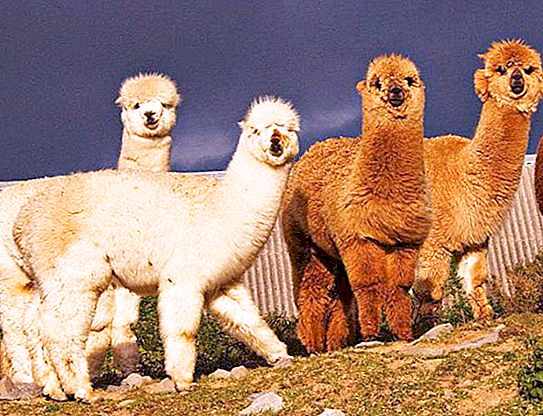
Vicuna is an animal whose hair is considered the most expensive in the world. Until recently, these “mini-camels" were on the verge of extinction, and only thanks to the competent policies of international organizations and the governments of the countries where the vicuna lives, its number began to grow. Today in the world there are already almost two million individuals.
Spread
Vicuna is an animal found only in the western part of South America - in the highlands of the Andes. Distributed in the territories of Peru, Chile, Bolivia, Ecuador and Argentina. These representatives of the fauna live in rather harsh conditions - at an altitude of 3.5 to 5.5 km. The largest population is in Peru. The animal vicuna, whose photo we posted in this article, is the national symbol of the country. Her image can be seen on the coat of arms of Peru.
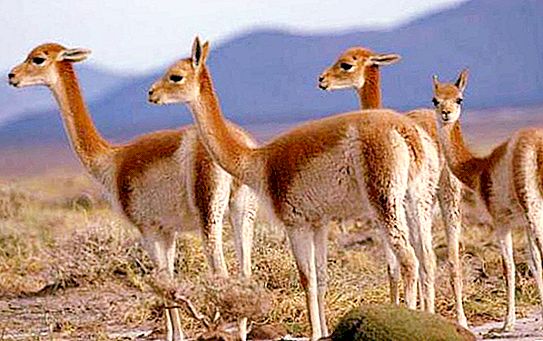
Vicuna needs a cold and dry climate and places with accessible ponds. These animals inhabit the plains covered with short and hard vegetation, and on hilly fields.
Description
Vicuna is a harmonious and graceful animal. The length of his body is about one and a half meters, the height at the withers does not exceed a meter, and the weight is 50 kg. The tail is short - from 15 to 25 cm. The head is round with large expressive eyes. The ears are narrow, pointed at the ends, rather long. Long limbs and neck give the animal grace.
Physiological features of vicuna
Vicuna is an animal with amazing physiological features: the lower incisors are covered with enamel only on one side, and they grow back constantly, like in rodents. They are sharpened when the animal cuts off the stiff stems of the plants.
The heart of the vicuna is larger than other mammals of the same size, all thanks to adaptation to great heights. In the blood there is an increased level of oxygen and hemoglobin. In addition, erythrocytes (red blood cells) in vicunas are oval in shape, and not disk-shaped, which is typical for the inhabitants of the plains.
Coat and color
Soft and thick coat covers the entire body of a humpbacked camel. The neck and head are painted in a reddish-brown shade, and silky white wool, up to 30 cm long, which forms a bib, is decorated with a chest. The lower part of the body, as well as the inside of the legs, is gray-white, and the back and the outside of the limbs are reddish-brown.
Lifestyle
Vicuna is a herd animal living in small groups of 5 to 15 adults. The group is led by a male leader who jealously guards his “family”. He is constantly on the move, trying to move a little higher up the hill. This allows him to observe the surroundings and, in case of danger, send a signal to his relatives. Family members demonstrate submission to the leader, putting his neck on his back.
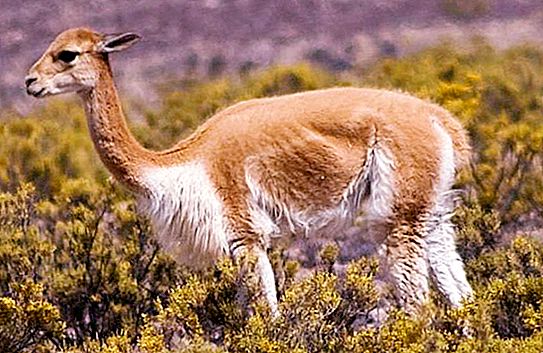
These attentive and very shy animals on a hill reach speeds of up to 47 km / h. Compared to other ungulates, vicuñas move very gracefully. In moments of danger, they make a whistling loud sound, warning the herd. The site occupied by vicunas is divided into pasture and sleeping area.
Adult males who do not lead the herd live in solitude or create their own group with the appropriate hierarchy. In addition to disciplined herds, in the mountains you can meet groups of young males who gain strength and experience and wait for the moment when they manage to discourage the females from the aged leader and thus form their own herd.
Vicunas caught in captivity often refuse to take water and food, practically do not make contact with a person. This is the main reason why for many centuries this animal was never managed to be tamed, although even today such attempts are being made.
Food
Given the peculiarity of the habitats of these animals, we can assume that their diet is not rich. Almost all the vegetation that can be found in the mountainous terrain is eaten. The roots of vicuna plants are not eaten.
The real feast for them are the thickets of wild grasses found on their way. They probably would have raided cultural fields cultivated by man, but, fortunately, mountain artiodactyls do not like to go low.
Reproduction and longevity
Until the middle of the 20th century, man was the main enemy of vicunas. But when the animals were listed in the Red Book, the situation changed dramatically: the lifespan of these animals increased significantly. Today, in natural conditions, they live up to 15-20 years.
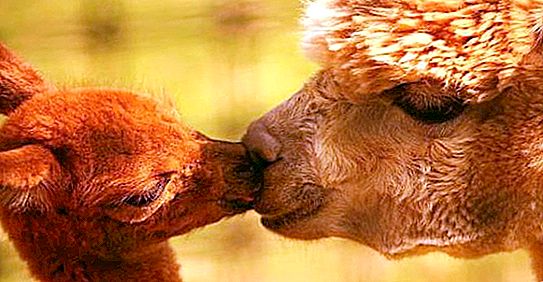
The mating season is in the spring. The female pregnancy lasts 11 months. Each female at childbearing age brings offspring annually. It is easy to calculate that each new mating season comes for her a month after giving birth. Until the age of one year, foals graze next to their mother, are still in the herd for one and a half to two years, and only after that they go out to "free bread".
The price of vicuna wool
Of all natural types of wool, vicuna wool is considered the most valuable and expensive in the world. This is due to its special characteristics, and the rarity, and the small number of animals. The vicuna fur (photo you can see below) consists of very thin and soft fibers up to 30 cm long. The average fineness (diameter of the hair) of the vicuna wool is 10-15 microns, and its down fibers reach only 6-8 microns. You can compare this indicator with alpaca fineness - 22-27 microns, yak - 19-21 microns, cashmere 15-19 microns. Chinchilla fur is also inferior to her.
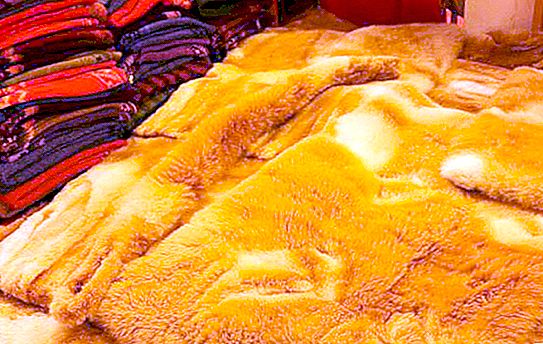
About half of the total volume of wool is harvested in Peru, followed by Bolivia, Argentina and Chile. Production volumes are small. By law, an adult animal is allowed to mow no more than once every two years, while it is possible to get no more than 400-500 grams of wool from each individual.
A kilogram of manually sorted wool costs up to $ 1000. A meter of vicuna wool fabric weighing 300 grams costs up to $ 3000. For example, a man’s coat will cost at least $ 20, 000. Here is such a valuable animal - vicuna. A fur coat from her fur can be the most expensive acquisition, in addition to real estate, of course. For such an exclusive product, the fur is handmade. Since it is forbidden to kill these animals, the fur surface is reproduced from the fleece.
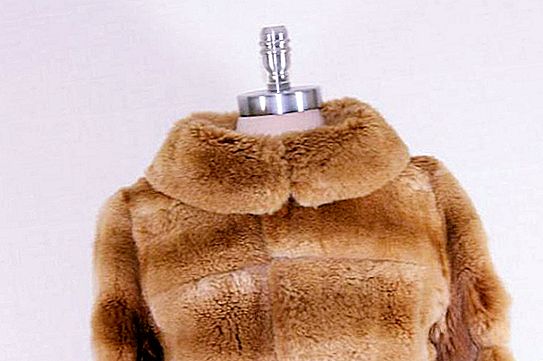
Vicuna wool has a rare shade of cinnamon - from dark to light. Due to its unique properties, it is never painted.
Wool collection
The only permitted way to collect vicuna wool for today is the ancient version: the herd is driven into a fenced place where the veterinarian examines the animals and helps them if necessary. Healthy animals are sheared.
In Peru, special permits have been introduced for all those who sell and manufacture products from the wool of these animals. Such certificates ensure that wool was obtained from live vicunas. Without such permission, any sale is illegal. The special marking for products from vicunias has been approved (Vicua is the country of origin of the product).

